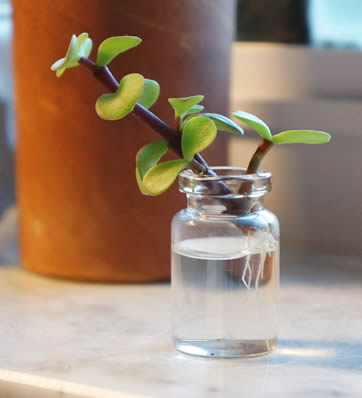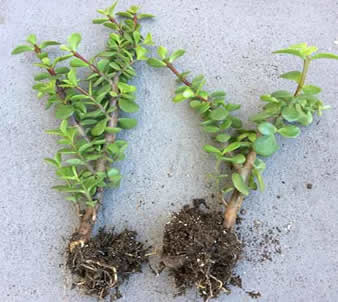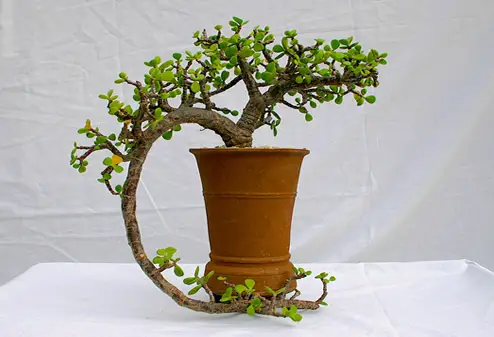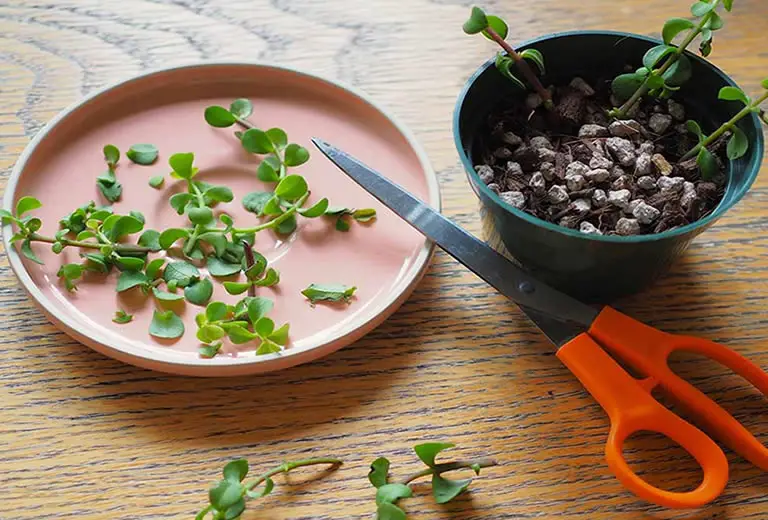If you’ve ever wanted to grow more Elephant Bush without spending a dime, you’re in luck—Portulacaria afra is one of the easiest succulents to propagate. With just a few snips and a little patience, you can create dozens of healthy new plants from a single mature bush.
Whether you’re propagating for fun, sharing with friends, or filling out your garden, this guide walks you through every method that works for Elephant Bush—indoors and out.
All propagation methods in this guide apply to every variety of Elephant Bush, including compact types, trailing forms, and variegated cultivars.
Table of Contents
When to Propagate Elephant Bush
The best time to propagate is during the growing season—spring through early fall—when the plant is actively putting out new growth.
Warmer temperatures and longer days help cuttings root faster and more reliably.
You can propagate in winter too, but root development may take longer and should be done indoors.
Method 1: Stem Cuttings (The Most Reliable Method)
Elephant Bush stems root readily in soil, making stem cuttings the fastest and most reliable method of propagation.

-
Use clean, sharp scissors or pruners to cut a healthy stem about 3–5 inches long.
-
Remove the leaves from the bottom third of the cutting.
-
Let the cutting sit in a dry, shaded spot for 24–48 hours to allow the cut end to callous over.
-
Once calloused, plant the cutting in dry succulent or cactus mix.
-
Do not water right away.
-
After 5–7 days, begin watering lightly when the soil is completely dry.
Keep the cutting in bright, indirect light while it roots.
Within a few weeks, you’ll see new leaves or gentle resistance when you tug—signs that roots are forming.
Method 2: Propagating in Water (Optional, with Bonus Tip)
While not the preferred method, Elephant Bush can be rooted in water if done carefully.

-
Follow the same cutting steps as above, allowing the cut end to callous first.
-
Place the cutting in a jar or glass with just the bottom inch of the stem submerged.
-
Keep the container in a warm spot with bright, indirect light, and change the water every 2–3 days.
Bonus Tip: Add one or two drops of a diluted succulent-safe fertilizer (e.g. NPK 5-10-10 like this one, or 2-7-7 like this one) to the water to encourage faster root development.
Once roots are 1–2 inches long, plant the cutting in dry soil and wait a few days before watering.
This method works best for shorter, upright cuttings and may not be as successful with trailing forms.
Method 3: Division
If you have a large, multi-stemmed Elephant Bush, you can divide it to create entirely new plants.

-
Gently remove the plant from its pot and shake off loose soil to expose the roots.
-
Identify natural clumps or branches that can be separated from the main plant.
-
Use your hands or a clean knife to divide the plant, making sure each section has roots and stems.
-
Let any broken or damaged roots callous for a day before repotting in dry soil.
Wait a few days before watering to avoid root rot and give the divisions time to settle.
This method is great for restoring balance in an overgrown container or refreshing an old plant.
Propagating Elephant Bush Outdoors
In USDA zones 9–11, Elephant Bush can be propagated directly outdoors:
-
Take stem cuttings and allow them to callous for a day or two in a shaded spot.
-
Plant directly into well-draining garden soil or a sandy mix.
-
Avoid watering for the first 5–7 days, then water sparingly as roots begin to form.
-
Choose a sunny location with morning light and light afternoon shade, especially in very hot climates.

Outdoor propagation is especially effective in dry climates and works well in raised beds or rock gardens.
Best Tips for Successful Propagation
-
Use clean tools and let all cuts callous to prevent rot.
-
Avoid overwatering, especially in the first few weeks.
-
Provide bright, indirect light while rooting—avoid harsh direct sun until the plant is established.
-
Rooting hormone is optional but can help speed up root development, especially in cooler seasons.
-
Newly propagated plants grow slowly at first, then take off once roots are strong.
Once your newly propagated plants begin to mature be sure to give them the optimum care as outlined in our article Elephant Bush Care: The Ultimate Guide to Growing Portulacaria afra Indoors and Out.
Final Thoughts
Elephant Bush is one of the most rewarding succulents to propagate—quick to root, easy to care for, and endlessly versatile.
Whether you’re starting new plants from cuttings or dividing an older specimen, Portulacaria afra offers a reliable way to expand your succulent collection with minimal effort.
Just a few cuttings can become a lush tabletop arrangement, a hanging basket, or the start of an outdoor groundcover.
And with so many uses, there’s always room for one more Elephant Bush.

